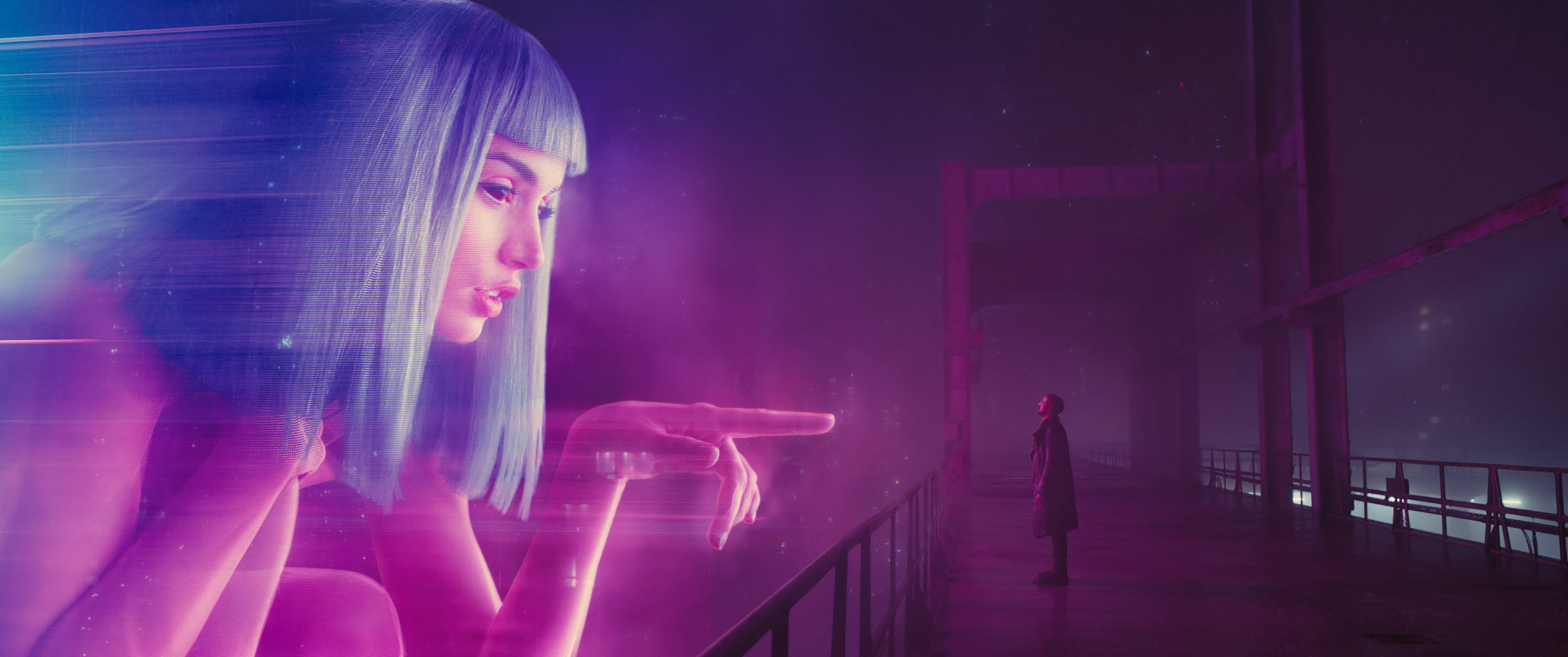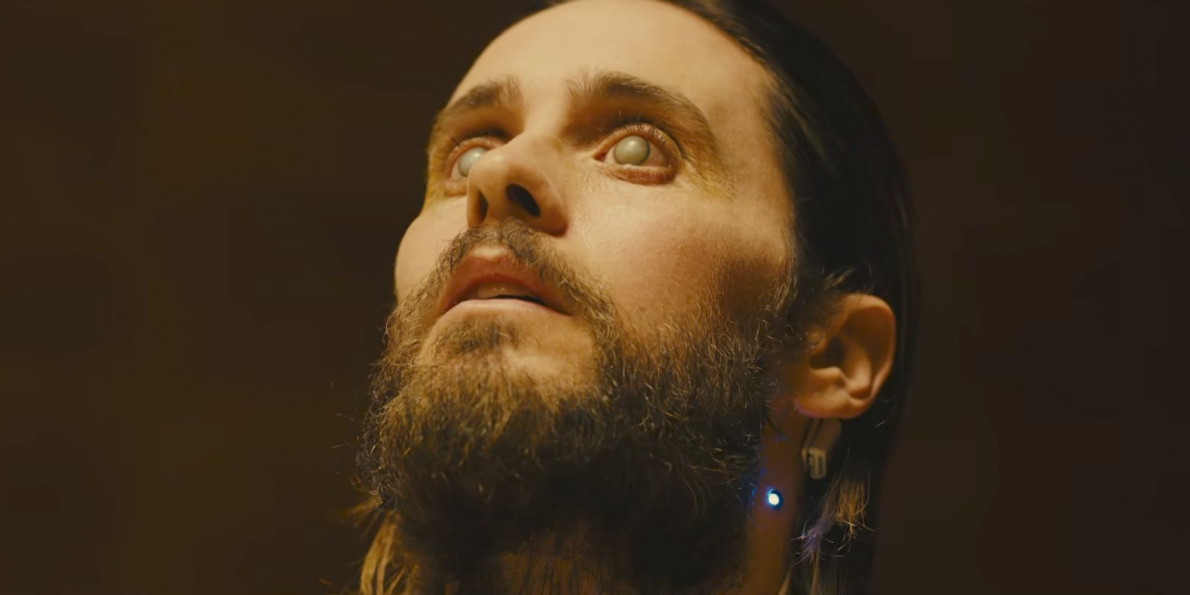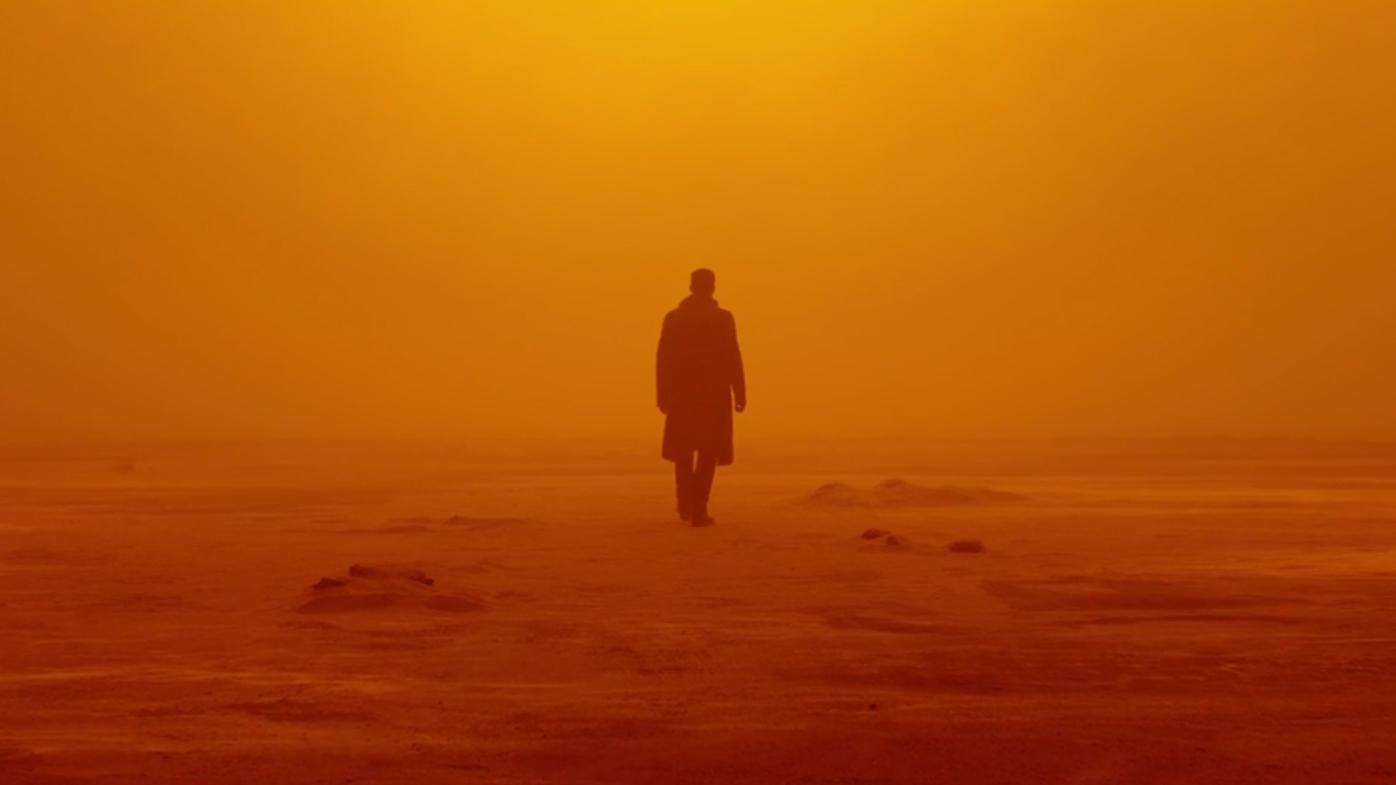Related Review: Blade Runner 2049
by Zachary Davis, October 13, 2017
Blade Runner 2049 opens on an extreme closeup of an eyeball. It is a shot that directly recalls the opening of the original film—a shot I remembered beginning the first Blade Runner as well. The sight of this familiar motif serves as a direct reminder to a majority of the audience as to why they are there in the first place. What made us pay fifteen dollars for the full IMAX experience of a sequel made 35 years after the original? It’s the nostalgia, of course—the memories.
Nostalgia is always in the background [and sometimes foreground] of the new film. The main character loves listening to Frank Sinatra. Deckard’s new casino hideout comes complete with a frenetic glitching hologram show featuring Elvis and Marilyn Monroe. And the film itself plays as almost a reversal of its original—the story is there, the synth film score is there, the world is there—but it has been expanded, elongated, and evolved for its audience.
In the film, the Nexus model replicants have made a return to market after the original Tyrell debacle. Blade runners still do the dirty work of “retiring” them—but now skin jobs themselves can openly serve on the police force. It’s a brave new world, but it’s also a familiar world. A world where, much as in our own world of constant remakes and sequels that bank on nostalgia, everything old is made new again—only now it is made even more marketable, even more consumable.
Ryan Gosling’s “K,” a blade runner with a serial number instead of a name, is just as much of an emotional blank slate as Harrison Ford’s Deckard was. The main difference is that there is no confusion on K’s identity—he is introduced as a replicant right away. This does not mean that his identity remains definite throughout. The familiar themes of Blade Runner are all still here—how can we know what reality is? Do our memories deceive us? Are we even still human? And yes, that old question still exists: goddammit, is Harrison Ford a replicant or not?
Of course, it doesn’t really matter—just as in the original, our main character is a dehumanized android [literally, this time] which must make a journey towards being more human. Ryan Gosling’s performance as K, however, makes that return journey work by how incredibly nuanced and interesting his performance is, even as he plays the blank slate of an android suddenly stuck in existential crisis mode. His robotic performance emphasizes the impact of the journey he undergoes.
There is a moment when he has to confront the idea of his implanted memories—a moment where he repeats to himself that he “know what’s real”—that results in an explosion of emotion built up from all of the previous scenes. It’s a moment you would be hard pressed to find in Ford’s original performance. But Harrison Ford does have an equally dynamic moment in a scene with new corporate overlord Wallace [Jared Leto] which is both understated and dramatically devastating. It also shows us that replicant or not, Deckard’s experience with Roy on the rooftop 30 years ago may have actually worked in making him a more human character.
While themes and characters remain similar across both films, 2049 does what science fiction does best and relates those themes and its world to our own. Whereas 2019 Los Angeles seemed owned by Japanese corporations, 2049 Los Angeles shows more Russian influences across its new world. The ecological devastation of the first film has also been updated to reflect our growing environmental anxieties. A giant sea wall now protects Los Angeles from the rising ocean water that threatens to destroy the city. The “farmland” outside of the city is a desert wasteland where farmers grow grubs for protein and a dead tree is the only signifier that nature had ever existed. A junk yard the size of a city stretches out for miles and miles, a home to many of the children abandoned in a world where replicants are slowly but surely replacing the entire human race. Make no mistake—2049 is a dark and brooding film. And well it should be.
The idea of maintaining humanity in a society gone infertile—a theme from the first film which becomes the lynchpin of the sequel—is more important than ever before. Technology has been updated to showcase this film in 2049 as well, with the introduction of K’s virtual home assistant—a sexualized holographic version of Alexa called “Joi”—which he attempts to help become more “real” by releasing from her virtual restraints and carrying her around with him in the real world. This version of home life—an android trying to play house with a virtual intelligence—is a concept that ties nicely into the idea of the first movie. It also teases us with the threat of how artificial intelligence may look in a future where humanity is no longer reserved for humans alone.
When I re-watched Blade Runner with 2049 in mind, I thought again of that opening shot of the eyeball. Eyes are a recurring motif in both films. In 2049, the first replicant we meet, one of the new models that can now age, must put on glasses to see correctly. Jared Leto’s evil corporate deity is blind, and can only see through odd floating technology stones that see for him. Another replicant is missing a single eye. One character can tell a memory presented to him in the flesh is counterfeit by the fact that the creation has the wrong eye color.
The reason eyes are so important in this world of implanted memories is that while the eyes may record the human experience for us, the brain can counterfeit those images at any time. They can reflect false programming. When I re-watched Blade Runner after 2049, I learned that my memory of that opening shot was actually incorrect—the first shot of Blade Runner isn’t an eye at all, but the cityscape of Los Angeles. My memory had been counterfeited by my own nostalgia. How many other memories of my own have fallen victim to this same trap? How much of my perceived and remembered reality has been false this entire time?
Maybe the first step in uncovering your real reality is looking at which programs have been running false images through your memory. Then again—maybe it’s better not to know such glitches in reality exist. Doubt in your own experiences, your own realities, may simply result in an existential crisis your programming is not equipped to handle. Nostalgia—however false it may be—could be the better option. Maybe in the end it’s really best to just keep telling yourself, “I know what’s real—I know what’s real.”






